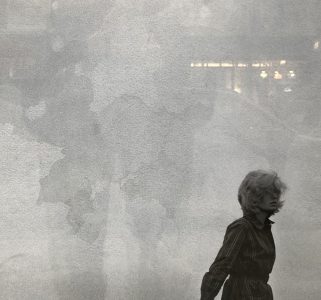
A peacock butterfly settles on the sunlit trunk of an oak tree; the white lilac is in flower; it’s Spring – and everywhere, the bright leaves are shining; it’s been warm enough to sit outside; to sit outside, read and think. I’ve been thinking about a book, a very good book …
And so I want to commend Stephen Grosz’s ‘The examined life’; it’s an excellent example of practical and accessible psychoanalysis. It’s also a delightful illustration of the art of insight. Grosz presents 31 case studies or vignettes that are based on his professional experience with a range of clients who had come to see him for psychotherapy. The account he gives is riveting for several reasons; of those, I shall mention three:
First, he describes many of the fascinating modes of conduct and the psychological idiosyncrasies of his clients. I was unexpectedly re-assured by his reminder that there is nothing so strange as people; we come across, for example, Philip, who turns out to be a pathological and spectacular liar. We learn that, from an early age, Philip told lies: at the age of eleven or twelve he claimed to haver been recruited by MI5 as one of its agents; even in his workplace he told far-fetched lies – although rarely would anyone challenge him. Insouciantly, he told Stephen Grosz that, in his line of work (TV production), ‘everyone in the industry lies’ and that it is ‘part of the skill set.’ (I couldn’t help laughing when I read this; I’m told that nowadays a high proportion of people fake their curriculum vitae and that a part of the business of becoming famous entails creating myths or half-truths about the ‘self’.) But why is Philip wedded to lying? Grosz shows us that his lying is a substitute for the way in which he carried on a tacit and private conversation with his late mother. Philip tells lies in order to create a mess. In fact, each of the people we meet in Grosz’s case studies is charming and intriguing, in large part because they either do bizarre and seemingly irrational things or think in highly original ways.
Second, Grosz helps his reader to learn more about some of the most fundamental features of the human condition. He does this by moving from the specific case to propose a more general truth. One example is the case of Matt. Matt is a young man who leads an alarmingly dangerous existence and who has been incautious enough to point a gun at a police officer. Grosz uses his own felt reactions to help unpack the deep psychological character of his patient. After a while we learn that Matt has ‘never acquired a skill that we all need: the ability to make a person worry about us.’ For me, it is this kind of remark that consistently elevates the quality of Grosz’s writing into something profound. We discover that Matt is a character who does not seem to register his emotions. He has silenced them. He remains oblivious to (or heavily defended against) his feelings. In consequence he cannot feel pain – and this is potentially devastating. Grosz tells us that:
‘The truth of the matter is this: there is a little bit of Matt in each of us. At one time or another we all try to silence painful emotions. But when we succeed in feeling nothing we lose the only means we have of knowing what hurts and why.’
Third, parts of the text challenge some of the conventional beliefs widely shared in western culture. He rejects the idea that we can (or should) achieve ‘closure’ on things that have deeply upset us. He thinks that whereas for the person who dies there is an end, ‘the person who mourns goes on living and for so long as she or she lives there is always the possibility of feeling grief.’ He concludes his inquiry with the observation that:
‘Closure is … delusive – it is the false hope that we can deaden our living grief.’
He also examines a cultural tendency to heap praise on youngsters which may end up having negative consequences for their psychological well-being and behavioural habits. Youngsters benefit from praise for effort – and for demonstrating those types of conduct that may help them to do well in life (such as patience) but they do not necessarily do well if they are praised and labelled ‘clever.’ In fact, Grosz underlines the importance of good quality attention. To this extent he restates a central principle of humanistic psychology: the foundation of helping others to do well, to fare well, lies in our ability to be ‘present’ for whomsoever we encounter.
Overall, Stephen Grosz’s book is a terrific source for learning more about one’s self as well as the sensitivities and complexities of others.
But, on a personal note, it (the experience of engaging with the book) also left me feeling angry because I was reminded of the courses that we used to run and of the fact that they were gradually destroyed by people who knew nothing about the height, breadth and depth of the human condition and the enormous value of allowing people the ‘space’ in which to conduct a personal psychological inquiry. We had, for example, spent something like fifteen years learning about how to implement the findings of humanistic psychology. But then a new institutional regime came into being that cared not one jot for our achievements, nor for our learning, nor our values.
So, I can’t help feeling that we have lost something – or that whatever it was that we used to do and value now lies submerged and scarcely animate – in the shadowlands of history.


